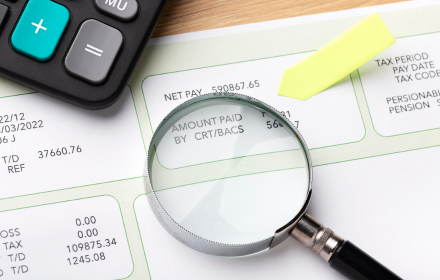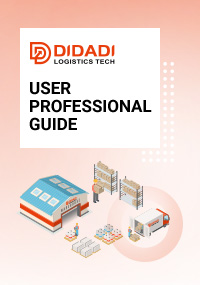How Are Import Duties and Taxes Calculated When Shipping from China

Importing products from China offers tremendous advantages — competitive pricing, vast product variety, and mature supply chains. However, the real landed cost of your goods isn’t just the supplier’s quote and freight rate. Once your shipment reaches its destination, you’ll need to deal with import duties, value-added tax (VAT), and customs fees, which can significantly affect your profit margins.
Understanding how these taxes are calculated is crucial for pricing your products correctly and avoiding costly surprises at customs. In this article, we’ll break down the main components of import duties and taxes, how they’re assessed, and what importers can do to manage these costs effectively.
Import duties are tariffs or taxes imposed by a country on goods entering its borders. Their purpose is to protect domestic industries, generate revenue, and ensure compliance with international trade laws.
Import taxes include additional government levies such as Value-Added Tax (VAT), Goods and Services Tax (GST), or excise duties depending on the destination country.
When you ship from China, these costs are not paid in China but rather in the destination country upon entry — unless your shipment uses a DDP (Delivered Duty Paid) service, where the shipper pays all import costs upfront.
To calculate the total amount due upon import, customs authorities usually assess the following:
a. Customs Value (CIF or FOB)
The customs value forms the base for calculating duties and taxes. It typically includes:
The product cost (based on your invoice)
The shipping cost (if CIF is used)
The insurance cost
Some countries use CIF value (Cost + Insurance + Freight), while others use FOB value (Free on Board) as the basis for taxation. Always check which one applies in your destination market.
b. Duty Rate (Tariff)
The duty rate depends on your product’s HS Code (Harmonized System Code) — a global classification system for goods.
For example:
HS Code 9503 (Toys) might have a 4% duty rate in the EU.
HS Code 9403 (Furniture) could be 0% in the U.S.
HS Code 4202 (Bags) may have a 9.5% duty rate.
Each country sets its own tariff schedule, so the same product may incur different rates in the U.S., Canada, or Germany.
c. Import Taxes (VAT or GST)
On top of duties, most countries impose a consumption tax — such as VAT (in Europe and the UK) or GST (in Australia and Canada).
EU countries: VAT ranges from 17% to 27%, applied to the CIF value plus import duty.
UK: Standard VAT is 20%.
Canada: GST is 5%, plus possible provincial sales taxes (PST or HST).
U.S.: No national VAT, but state-level sales tax may apply.
Let’s walk through an example of how duties and taxes are typically calculated.
Example:
You import electric kettles from China into Germany.
| Item | Amount (USD) |
| Product Cost | $10,000 |
| Freight & Insurance | $1,000 |
| Total CIF Value | $11,000 |
| Import Duty (4%) | $440 |
| Subtotal | $11,440 |
| VAT (19%) on Subtotal | $2,173.60 |
| Total Payable at Customs | $2,613.60 |
So, even though your goods cost $10,000, the total landed cost becomes $13,613.60 after duties and taxes.
This example shows why it’s essential to factor import fees into your pricing strategy before listing products online or signing purchase agreements.
You can find your product’s duty rate using official databases such as:
Simply enter your HS code or product description, and the database will show:
Import duty rate
Applicable taxes
Additional requirements (certifications, anti-dumping measures, etc.)
These tools help importers plan costs and verify that suppliers are quoting correct tariff categories.
Your HS code is the most important piece of information for determining import duty. It’s a six-digit international standard that can be extended to eight or ten digits by specific countries.
For instance:
HS 9503 — Toys (general category)
HS 9503.00 — More specific toy group
HS 9503.00.90 — Detailed product code used for tariffs
Misclassifying your product’s HS code — intentionally or by mistake — can cause delays, fines, or reclassification at a higher duty rate.
To avoid problems:
Ask your supplier for the HS code they use for export.
Verify it with your freight forwarder or customs broker.
Ensure the product description and invoice match the declared HS code exactly.
Even experienced importers make avoidable errors when estimating duties and taxes. Some frequent ones include:
Assuming samples are duty-free — In many countries, even free samples are taxed if their declared value exceeds certain limits.
Under-declaring invoice value — This may seem like a shortcut, but customs authorities can seize or penalize your shipment if discovered.
Ignoring anti-dumping or safeguard duties — Some product categories (like steel, solar panels, or ceramics) carry additional special tariffs.
Using wrong HS codes — Misclassification can delay clearance or trigger audits.
Each mistake can lead to delays, extra costs, or even blacklisting by customs. Transparency is always safer and more cost-efficient.
DDP (Delivered Duty Paid) is a popular shipping method for small to medium importers who want to simplify the customs process. Under DDP terms, the seller or forwarder pays all import duties, taxes, and customs fees before delivery.
This means your goods arrive at the destination warehouse or Amazon FBA center with no additional charges at the border.
For businesses that need predictable pricing or don’t have a customs broker in the destination country, DDP shipping eliminates uncertainty and administrative hassle.
Reliable logistics providers can handle:
HS code classification
Duty and tax prepayment
Customs documentation
Door-to-door delivery with tax included
It’s especially useful for Amazon FBA sellers in Europe and North America who need smooth, compliant delivery of Chinese goods.
While duties and taxes are unavoidable, smart planning can help you reduce their impact:
Choose the right HS code — Some similar items have different duty rates.
Split shipments wisely — Small consignments may fall below minimum duty thresholds.
Source from Free Trade Agreement (FTA) partners — If your destination country has trade agreements with China or nearby nations, check for tariff reductions.
Consolidate shipments — Combining goods into fewer, larger shipments can lower per-unit logistics costs.
Use bonded warehouses — Storing goods in bonded facilities delays duty payment until the items are sold or distributed.
A good freight forwarder can guide you on which options are practical for your business model.
Handling customs paperwork and tax calculations manually can be confusing, especially for newcomers. Partnering with an experienced China-based logistics company ensures that each shipment is properly declared, compliant, and cost-optimized.
For example, DIDADI Logistics assists importers by:
Managing export documentation and customs clearance
Advising on HS code classification and duty estimation
Offering DDP shipping solutions to major markets like the U.S., UK, Germany, France, and Italy
Coordinating with reliable customs brokers abroad for transparent handover
With professional logistics support, importers can focus on sales and product development — not the complexities of tariff schedules or customs formulas.
Importing from China can be profitable, but it’s never as simple as just paying your supplier and booking a shipment. Every product that crosses borders is subject to a set of rules, tariffs, and taxes that determine its final landed cost.
By understanding how customs calculates import duties, verifying HS codes, and budgeting for taxes early, you can avoid delays and protect your margins.
And with the right logistics partner managing your DDP shipments, customs documentation, and delivery, you’ll gain peace of mind that your imports are fully compliant and cost-efficient — from the factory gate in China to your warehouse abroad.
Recommended Reading















